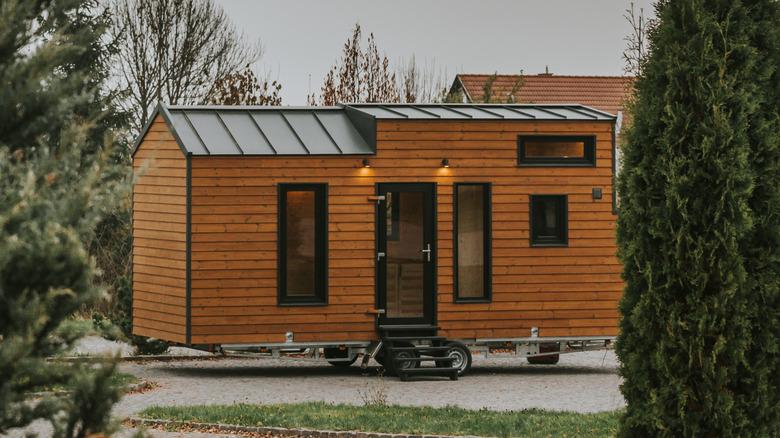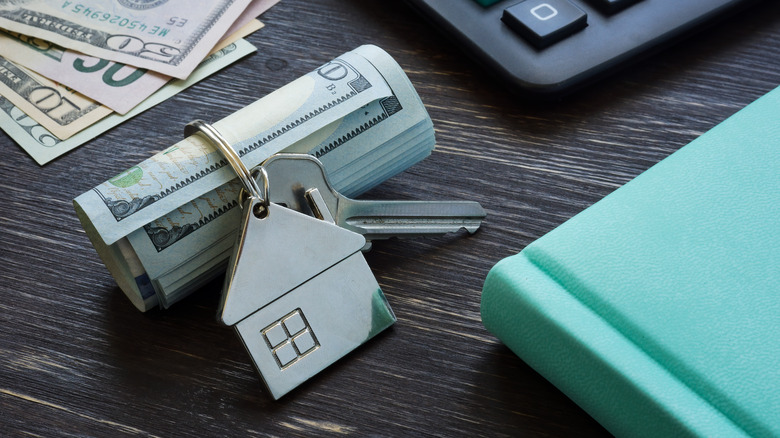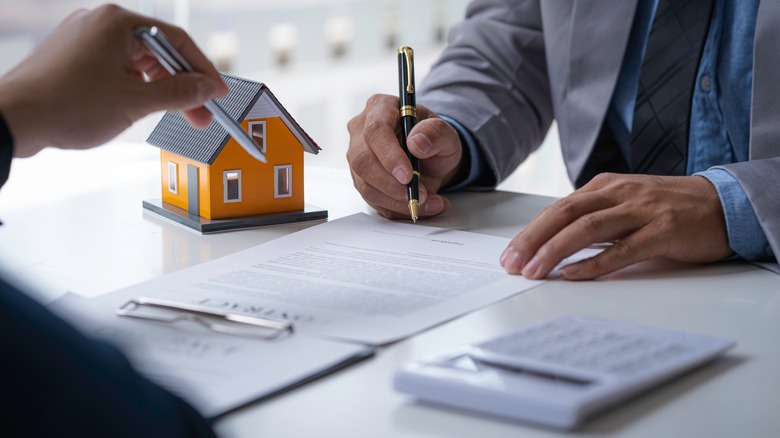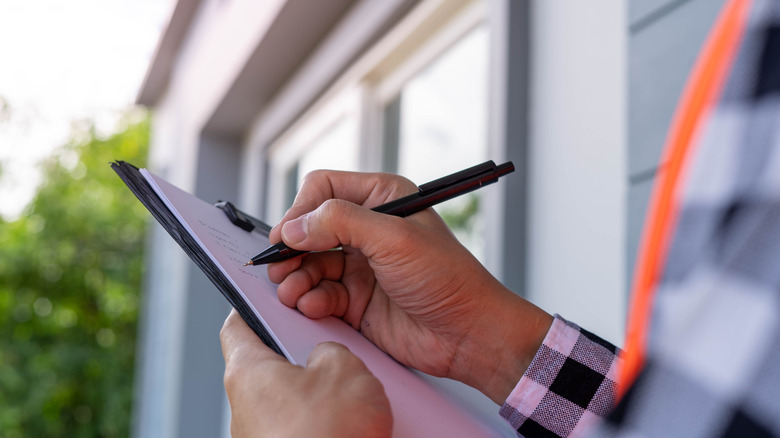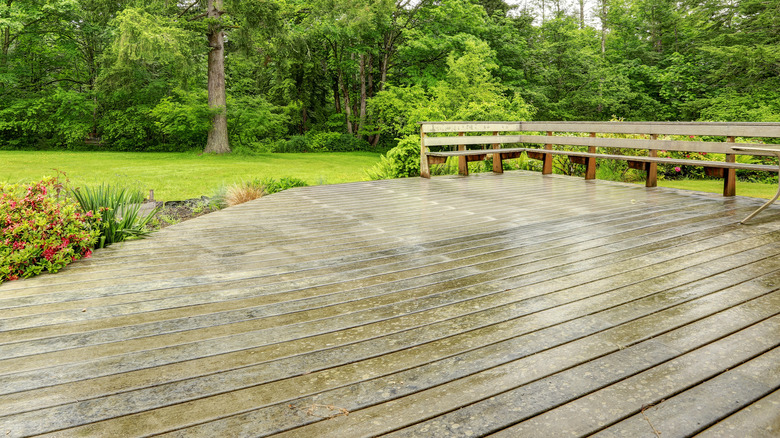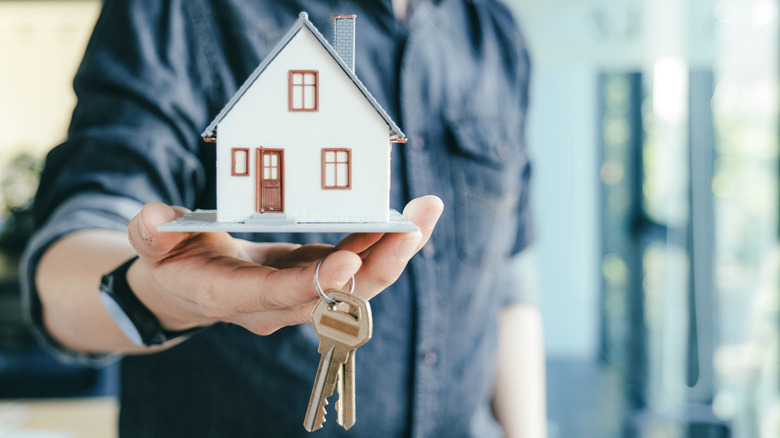Financial Facts To Consider Before Buying A Tiny House
If the cost of homeownership has you overwhelmed and frustrated, you may be thinking about downsizing quite a bit and buying a tiny house. Whether you buy a pre-made version or build one on your own, this type of smaller house could mean you and your family have far less space to live in, maintain, and pay for, but there's more to the process than most realize.
First, what is a tiny house? No single definition defines what this is, though Tiny Home Builders states these properties are typically homes with under 600 square feet of living space. Some are built on a trailer, allowing them to be mobile, while others sit on a foundation on a plot of land. They may be elaborate or very simplistic, but you should know that there are a number of financial implications for tiny homes that must be factored into any buying decision.
They're not always cheap
One of the biggest misconceptions about tiny homes is that they're super inexpensive to build or buy. That may make sense because they're so much smaller, but there's still quite a bit that goes into the building of a tiny home, and they can be quite valuable as well, especially if you want every bell and whistle. Still, it's true that they may be much more affordable than what you could pay for a traditional home.
According to Fixr, the average cost to build a tiny home in the U.S. ranges from $40,000 to $80,000, depending on factors such as size and location. The site notes a 200-square-foot home built on a foundation is typically around $60,000. On the other hand, a prefabricated model that's even smaller, at around 100 square feet, typically costs around $25,000. While this is a significantly lower price than building a traditional single-family home, it could still be quite expensive in some situations, especially if you want to invest in higher-end furnishings and fixtures.
Getting a loan could be harder
If you plan to build or buy a tiny home, you may hope to secure a traditional mortgage to help you to do so, but that's more challenging than you think. According to NerdWallet, the typical minimum amount lent for a residential mortgage is $50,000, so a home under this value could be harder to secure. What's more, some lenders may not be willing to loan for some types of tiny homes. For example, some lenders only provide loans on properties with a permanent foundation. If your tiny home doesn't have one because you want to be able to move it, some financial institutions may not agree to work with you.
One option is to determine if the tiny home builder could help with securing financing. Some companies offer in-house lending or have relationships with lenders that could help create a better financial path forward for some buyers.
There are lots of building code requirements
As you work to create a tiny home for your family, you may be thinking about all of the easy ways to arrange the space to make the most out of it. Yet, there are building codes present in most areas that make this a bit harder to do. Failure to adhere to building codes could mean costly fines. The problem is, these rules change from one city to the next, so you'll need to do some research before getting started.
Money Task Force states tiny home building codes may include rules about having a full bathroom with a ceiling that's at least 6 feet and 4 inches, and main areas that are 6 feet and 8 inches, at the least. They may also need to have a set of steps or a ladder if there's a loft. You'll also have to ensure your tiny home has at least one window that's large enough to be an exit in an emergency.
Adding features adds more cost
A tiny home doesn't provide a lot of room for many families when it comes to having time to spend together or privately. That's why many add on a variety of features or enhancements to make the space a bit more usable or better for their needs. Each added project increases what you'll pay for the property overall.
For example, Fixr says adding a deck to the exterior of a tiny home could add to the cost. Standard decks start at $500, but could be much more depending on size and features. More so, adding built-in features, like a super-cool bench with storage, seating, and even a bed, could be as much as $10,000. Adding custom storage space could cost between $1,000 to $5,000, too. These additional costs must be considered from the start of any project. That way, you're not redoing a project later, which further adds even more to the home's cost.
The resale value can be a problem
If you're considering a tiny home, be confident in your decision because it could be hard to get your money back out of the property should you try to sell it later. The resale value of tiny houses tends to be less-than-spectacular. According to Ramsey Solutions, there are a few factors to consider. Unlike a traditional home, tiny houses do not appreciate in value based on the real estate climate in the area. More so, if it's a mobile tiny home, it will depreciate at about the same rate as an RV.
That could mean if you were to sell the tiny house in a few years, you may not get as much out of the sale as you thought you could, especially if you have those special fixtures and extras built into it. You may not recoup your investment on the tiny house overall.
